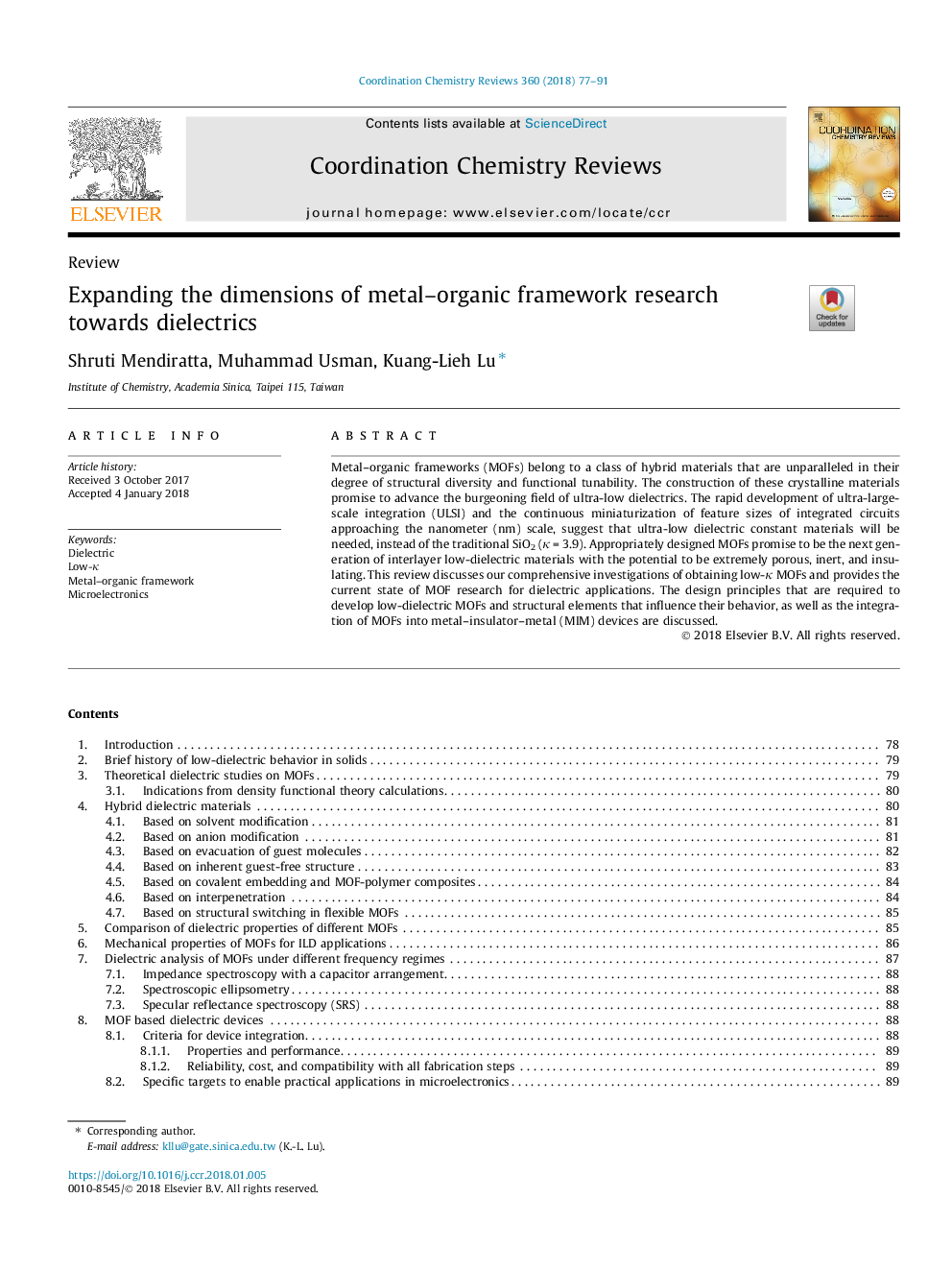| Article ID | Journal | Published Year | Pages | File Type |
|---|---|---|---|---|
| 7747657 | Coordination Chemistry Reviews | 2018 | 15 Pages |
Abstract
Metal-organic frameworks (MOFs) belong to a class of hybrid materials that are unparalleled in their degree of structural diversity and functional tunability. The construction of these crystalline materials promise to advance the burgeoning field of ultra-low dielectrics. The rapid development of ultra-large-scale integration (ULSI) and the continuous miniaturization of feature sizes of integrated circuits approaching the nanometer (nm) scale, suggest that ultra-low dielectric constant materials will be needed, instead of the traditional SiO2 (κâ¯=â¯3.9). Appropriately designed MOFs promise to be the next generation of interlayer low-dielectric materials with the potential to be extremely porous, inert, and insulating. This review discusses our comprehensive investigations of obtaining low-κ MOFs and provides the current state of MOF research for dielectric applications. The design principles that are required to develop low-dielectric MOFs and structural elements that influence their behavior, as well as the integration of MOFs into metal-insulator-metal (MIM) devices are discussed.
Related Topics
Physical Sciences and Engineering
Chemistry
Inorganic Chemistry
Authors
Shruti Mendiratta, Muhammad Usman, Kuang-Lieh Lu,
